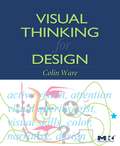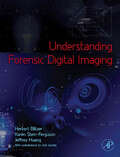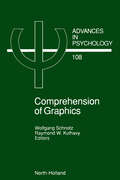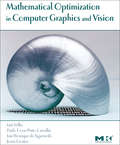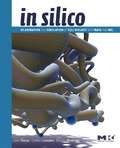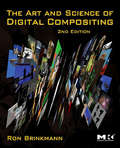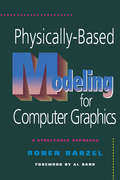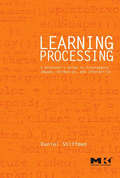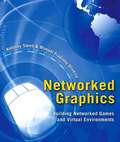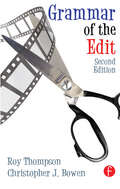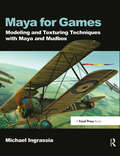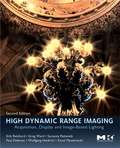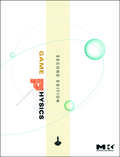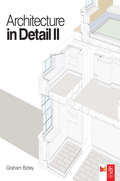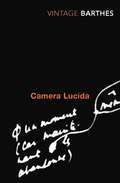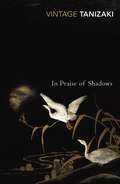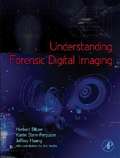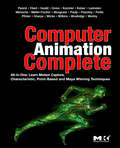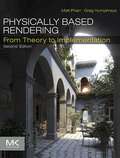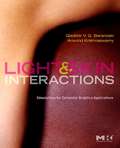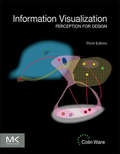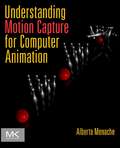- Table View
- List View
Visual Thinking for Design
by Colin WareVisual Thinking brings the science of perception to the art of design. Designers increasingly need to present information in ways that aid their audience’s thinking process. Fortunately, results from the relatively new science of human visual perception provide valuable guidance. In this book, Colin Ware takes what we now know about perception, cognition, and attention and transforms it into concrete advice that designers can directly apply. He demonstrates how designs can be considered as tools for cognition – extensions of the viewer’s brain in much the same way that a hammer is an extension of the user’s hand. The book includes hundreds of examples, many in the form of integrated text and full-color diagrams. Experienced professional designers and students alike will learn how to maximize the power of the information tools they design for the people who use them.Presents visual thinking as a complex process that can be supported in every stage using specific design techniquesProvides practical, task-oriented information for designers and software developers charged with design responsibilitiesIncludes hundreds of examples, many in the form of integrated text and full-color diagramsSteeped in the principles of “active vision," which views graphic designs as cognitive tools
Understanding Forensic Digital Imaging
by Herbert L. Blitzer Karen Stein-Ferguson Jeffrey HuangUnderstanding Forensic Digital Imaging offers the principles of forensic digital imaging and photography in a manner that is straightforward and easy to digest for the professional and student. It provides information on how to photograph any setting that may have forensic value, details how to follow practices that are acceptable in court, and recommends what variety of hardware and software are most valuable to a practitioner. In addition to chapters on basic topics such as light and lenses, resolution, and file formats, the book contains forensic-science-specific information on SWGIT and the use of photography in investigations and in court. Of particular note is Chapter 17, Establishing Quality Requirements, which offers information on how to create a good digital image, and is more comprehensive than any other source currently available.Covers topics that are of vital importance to the practicing professionalServes as an up-to-date reference in the rapidly evolving world of digital imagingUses clear and concise language so that any reader can understand the technology and science behind digital imaging
Comprehension of Graphics (ISSN #Volume 108)
by W. Schnotz R. W. KulhavyGraphic displays such as charts, graphs, diagrams, and maps play in important role today in the design and presentation of instructional materials education. There is also a strong need in scientific, technical and administrative fields to visually present facts, laws, principles etc. The increasing use of computer-based learning environments has also become an important field where the visual presentation of information plays a central role. Despite the importance of graphical displays as a means of communication and the fact that research about learning and cognition has advanced rapidly in the past two decades, the comprehension of graphics is still a rather unexplored area.The comprehension of graphics is not only a stimulating topic in the fields of science and instructional psychology, but also in related disciplines such as semiotics, and artificial intelligence. Research on the comprehension of graphics complements the scientific investigation of cognitive processes in text comprehension, which has contributed much to our understanding of human cognition and learning. Ultimately, a better understanding of the cognitive processes involved in the comprehension of graphics will have an impact not only on cognitive theory, but also on educational practice.
Mathematical Optimization in Computer Graphics and Vision (The Morgan Kaufmann Series in Computer Graphics)
by Luiz Velho Paulo Carvalho Jonas Gomes Luiz de FigueiredoMathematical optimization is used in nearly all computer graphics applications, from computer vision to animation. This book teaches readers the core set of techniques that every computer graphics professional should understand in order to envision and expand the boundaries of what is possible in their work. Study of this authoritative reference will help readers develop a very powerful tool- the ability to create and decipher mathematical models that can better realize solutions to even the toughest problems confronting computer graphics community today.Distills down a vast and complex world of information on optimization into one short, self-contained volume especially for computer graphicsHelps CG professionals identify the best technique for solving particular problems quickly, by categorizing the most effective algorithms by applicationKeeps readers current by supplementing the focus on key, classic methods with special end-of-chapter sections on cutting-edge developments
In Silico: 3D Animation and Simulation of Cell Biology with Maya and MEL (The Morgan Kaufmann Series in Computer Graphics)
by Jason Sharpe Charles John Lumsden Nicholas WoolridgeIn Silico introduces Maya programming into one of the most fascinating application areas of 3D graphics: biological visualization. In five building-block tutorials, this book prepares animators to work with visualization problems in cell biology. The book assumes no deep knowledge of cell biology or 3D graphics programming. An accompanying DVD-ROM includes code derived from the tutorials, the working Maya computer files, and sample animated movies.*Teaches artists and scientists to create realistic digital images of humans and nature with the popular CG program, Maya *This self-contained study guide includes background, foundations, and practice*Step-by-step example programs and end-result demonstrations help readers develop their own portfolios*Gorgeous four-color screen shots throughout
The Art and Science of Digital Compositing: Techniques for Visual Effects, Animation and Motion Graphics (The Morgan Kaufmann Series in Computer Graphics)
by Ron BrinkmannThe classic reference, with over 25,000 copies in print, has been massively expanded and thoroughly updated to include state-of-the-art methods and 400+ all-new full color images! "At ILM, compositing is one of the most important tools we use. If you want to learn more, this excellent 2nd-edition is detailed with hundreds of secrets that will help make your comps seamless. For beginners or experts, Ron walks you through the processes of analysis and workflows - linear thinking which will help you become deft and successfully tackle any shot." --Dennis Muren ASC, Senior Visual Effects Supervisor, Industrial Light & Magic "Ron Brinkman's book is the definitive work on digital compositing and we have depended on this book as a critical part of our in-house training program at Imageworks since the 1999 Edition. We use this book as a daily textbook and reference for our lighters, compositors and anyone working with digital imagery. It is wonderful to see a new edition being released and it will certainly be required reading for all our digital artists here at Imageworks." --Sande Scoredos, Executive Director of Training & Artist Development, Sony Pictures Imageworks The Art and Science of Digital Compositing is the only complete overview of the technical and artistic nature of digital compositing. It covers a wide range of topics from basic image creation, representation and manipulation, to a look at the visual cues that are necessary to create a believable composite. Designed as an introduction to the field, as well as an authoritative technical reference, this book provides essential information for novices and professionals alike. 17 new case-studies provide in-depth looks at the compositing work done on films such as Chronicles of Narnia: The Lion, the Witch and the Wardrobe, The Golden Compass, The Incredibles, King Kong, The Lord of the Rings: The Return of the King, Sin City, Spider-Man 2, Wallace and Gromit: The Curse of the Were-Rabbit, and Star Wars: Episode 3 – Revenge of the Sith.Includes new sections on 3D compositing, High Dynamic Range (HDR) imaging, Rotoscoping, and much more!All disc-based content for this title is now available on the Web.17 new case-studies provide in-depth looks at the compositing work done on films such as Chronicles of Narnia: The Lion, the Witch and the Wardrobe, The Golden Compass, The Incredibles, King Kong, The Lord of the Rings: The Return of the King, Sin City, Spider-Man 2, Wallace and Gromit: The Curse of the Were-Rabbit, and Star Wars: Episode 3 – Revenge of the Sith.Includes new sections on 3D compositing, High Dynamic Range (HDR) imaging, Rotoscoping, and much more!
Physically-Based Modeling for Computer Graphics: A Structured Approach
by Ronen Barzel Alan H. BarrPhysically-Based Modeling for Computer Graphics: A Structured Approach addresses the challenge of designing and managing the complexity of physically-based models. This book will be of interest to researchers, computer graphics practitioners, mathematicians, engineers, animators, software developers and those interested in computer implementation and simulation of mathematical models.Presents a philosophy and terminology for "Structured Modeling"Includes mathematicl and programming techniques to support and implement the methodologyCovers a library of model components, including rigid-body kinematics, rigid-body dynamics, and force-based constraint methodsIncludes illustrations of several ample models created from these componentsForeword by Al Barr
Learning Processing: A Beginner's Guide to Programming Images, Animation, and Interaction (The Morgan Kaufmann Series in Computer Graphics)
by Daniel ShiffmanThe free, open-source Processing programming language environment was created at MIT for people who want to develop images, animation, and sound. Based on the ubiquitous Java, it provides an alternative to daunting languages and expensive proprietary software. This book gives graphic designers, artists and illustrators of all stripes a jump start to working with processing by providing detailed information on the basic principles of programming with the language, followed by careful, step-by-step explanations of select advanced techniques.The author teaches computer graphics at NYU's Tisch School of the Arts, and his book has been developed with a supportive learning experience at its core. From algorithms and data mining to rendering and debugging, it teaches object-oriented programming from the ground up within the fascinating context of interactive visual media.Previously announced as "Pixels, Patterns, and Processing"*A guided journey from the very basics of computer programming through to creating custom interactive 3D graphics*Step-by-step examples, approachable language, exercises, and LOTS of sample code support the reader's learning curve*Includes lessons on how to program live video, animated images and interactive sound
Networked Graphics: Building Networked Games and Virtual Environments
by Manuel Fradinho Oliveira Anthony SteedNetworked Graphics equips programmers and designers with a thorough grounding in the techniques used to create truly network-enabled computer graphics and games. Written for graphics/game/VE developers and students, it assumes no prior knowledge of networking. The text offers a broad view of what types of different architectural patterns can be found in current systems, and readers will learn the tradeoffs in achieving system requirements on the Internet. It explains the foundations of networked graphics, then explores real systems in depth, and finally considers standards and extensions. Numerous case studies and examples with working code are featured throughout the text, covering groundbreaking academic research and military simulation systems, as well as industry-leading game designs.Everything designers need to know when developing networked graphics and games is covered in one volume - no need to consult multiple sources.The many examples throughout the text feature real simulation code in C++ and Java that developers can use in their own design experiments.Case studies describing real-world systems show how requirements and constraints can be managed.
Maya for Games: Modeling and Texturing Techniques with Maya and Mudbox
by Michael IngrassiaWell-known Maya professional, Michael Ingrassia, takes readers through his unique style of modeling: "Image Based Modeling" where efficient, realistic models can be created very quickly. Ingrassia's techniques allow modelers to create exact replicas of their concept characters or objects. The techniques presented are very efficient and allow game m
High Dynamic Range Imaging: Acquisition, Display, and Image-Based Lighting
by Greg Ward Sumanta Pattanaik Erik Reinhard Wolfgang Heidrich Paul Debevec Karol MyszkowskiHigh Dynamic Range Imaging, Second Edition, is an essential resource for anyone working with images, whether it is for computer graphics, film, video, photography, or lighting design. It describes HDRI technology in its entirety and covers a wide-range of topics, from capture devices to tone reproduction and image-based lighting. The techniques described enable students to produce images that have a dynamic range much closer to that found in the real world, leading to an unparalleled visual experience. This revised edition includes new chapters on High Dynamic Range Video Encoding, High Dynamic Range Image Encoding, and High Dynamic Range Display Devices. All existing chapters have been updated to reflect the current state-of-the-art technology. As both an introduction to the field and an authoritative technical reference, this book is essential for anyone working with images, whether in computer graphics, film, video, photography, or lighting design.New material includes chapters on High Dynamic Range Video Encoding, High Dynamic Range Image Encoding, and High Dynammic Range Display DevicesWritten by the inventors and initial implementors of High Dynamic Range ImagingCovers the basic concepts (including just enough about human vision to explain why HDR images are necessary), image capture, image encoding, file formats, display techniques, tone mapping for lower dynamic range display, and the use of HDR images and calculations in 3D renderingRange and depth of coverage is good for the knowledgeable researcher as well as those who are just starting to learn about High Dynamic Range imaging The prior edition of this book included a DVD-ROM. Files from the DVD-ROM can be accessed at: http://www.erikreinhard.com/hdr_2nd/index.html
Game Physics
by David H. EberlyCreate physically realistic 3D Graphics environments with this introduction to the ideas and techniques behind the process. Author David H. Eberly includes simulations to introduce the key problems involved and then gradually reveals the mathematical and physical concepts needed to solve them. He then describes all the algorithmic foundations and u
Architecture In Detail II (PDF)
by Graham BizleyFollowing on from Graham Bizley’s successful Architecture in Detail, Architecture in Detail II presents forty case studies of detailing on recent construction projects. Over 150 full colour drawings and photos provide a reference compendium for the professional architect seeking detailing inspiration. Originally featured in Building Design’s In Detail magazine, the included projects represent some of the most interesting and innovative techniques in recent architecture. Graham Bizley’s beautifully presented detail drawings allow the architect to easily see how ideas and techniques can be applied to other projects. The book is organized by building type for quick and easy reference.
Architecture In Detail II
by Graham BizleyFollowing on from Graham Bizley’s successful Architecture in Detail, Architecture in Detail II presents forty case studies of detailing on recent construction projects. Over 150 full colour drawings and photos provide a reference compendium for the professional architect seeking detailing inspiration. Originally featured in Building Design’s In Detail magazine, the included projects represent some of the most interesting and innovative techniques in recent architecture. Graham Bizley’s beautifully presented detail drawings allow the architect to easily see how ideas and techniques can be applied to other projects. The book is organized by building type for quick and easy reference.
Sustainability in Engineering Design: An Undergraduate Text (PDF)
by Anthony Johnson Andrew GibsonDesigned for use in engineering design courses, and as a reference for industry professionals learning sustainable design concepts and practical methods, Sustainability in Engineering Design focuses on designers as the driving force behind sustainable products. This book introduces sustainability concepts and explains the application of sustainable methods to the engineering design process. The book also covers important design topics such as project and team management, client management, performance prediction, and the social and environmental effects of sustainable engineering design. These concepts and methods are supported with a wealth of worked examples, discussion questions, and primary case studies to aid comprehension. Applies research-based methods to achieve real-world results for rapidly evolving industry trends Focuses on design engineers as the starting point of creating sustainable design Provides practical methods and design tools to guide engineering designers in creating sustainably designed and engineering products Incorporates all aspects of sustainable engineering design, including the material selection, production, and marketing of products Includes cutting-edge sustainable design model case studies based on the authors' own research and experiences.
Camera Lucida
by Roland Barthes Richard HowardExamining the themes of presence and absence, the relationship between photography and theatre, history and death, these 'reflections on photography' begin as an investigation into the nature of photographs. Then, as Barthes contemplates a photograph of his mother as a child, the book becomes an exposition of his own mind.
In Praise of Shadows (PDF)
by Junichiro Tanizaki Translated by Thomas J. Harper Edward G. SeidenstickerThis is an enchanting essay on aesthetics by one of the greatest Japanese novelists. Tanizaki's eye ranges over architecture, jade, food, toilets, and combines an acute sense of the use of space in buildings, as well as perfect descriptions of lacquerware under candlelight and women in the darkness of the house of pleasure. The result is a classic description of the collision between the shadows of traditional Japanese interiors and the dazzling light of the modern age.
Understanding Forensic Digital Imaging (PDF)
by Herbert L. Blitzer Karen Stein-Ferguson Jeffrey HuangUnderstanding Forensic Digital Imaging offers the principles of forensic digital imaging and photography in a manner that is straightforward and easy to digest for the professional and student. It provides information on how to photograph any setting that may have forensic value, details how to follow practices that are acceptable in court, and recommends what variety of hardware and software are most valuable to a practitioner. In addition to chapters on basic topics such as light and lenses, resolution, and file formats, the book contains forensic-science-specific information on SWGIT and the use of photography in investigations and in court. Of particular note is Chapter 17, Establishing Quality Requirements, which offers information on how to create a good digital image, and is more comprehensive than any other source currently available. Covers topics that are of vital importance to the practicing professional Serves as an up-to-date reference in the rapidly evolving world of digital imaging Uses clear and concise language so that any reader can understand the technology and science behind digital imaging
Computer Animation Complete: All-in-One: Learn Motion Capture, Characteristic, Point-Based, and Maya Winning Techniques
by David Gould Mark V. Pauly Matthias Müller Alberto Menache David S. Ebert Rick Parent Markus Gross Chris Kazmier Charles John Lumsden Richard Keiser F. Kenton Musgrave Darwyn Peachey Ken Perlin Hanspeter Pfister Jason Sharpe Mark R. Wilkins Martin Wicke Nicholas Woolridge Steve WorleyA compilation of key chapters from the top MK computer animation books available today - in the areas of motion capture, facial features, solid spaces, fluids, gases, biology, point-based graphics, and Maya. The chapters provide CG Animators with an excellent sampling of essential techniques that every 3D artist needs to create stunning and versatile images. Animators will be able to master myriad modeling, rendering, and texturing procedures with advice from MK's best and brightest authors. Divided into five parts (Introduction to Computer Animation and Technical Background, Motion Capture Techniques, Animating Substances, Alternate Methods, and Animating with MEL for MAYA), each one focusing on specific substances, tools, topics, and languages, this is a MUST-HAVE book for artists interested in proficiency with the top technology available today! Whether you're a programmer developing new animation functionality or an animator trying to get the most out of your current animation software, Computer Animation Complete: will help you work more efficiently and achieve better results. For programmers, this book provides a solid theoretical orientation and extensive practical instruction information you can put to work in any development or customization project. For animators, it provides crystal-clear guidance on determining which of your concepts can be realized using commercially available products, which demand custom programming, and what development strategies are likely to bring you the greatest success. Expert instruction from a variety of pace-setting computer graphics researchers.Provides in-depth coverage of established and emerging animation algorithms.For readers who lack a strong scientific background, introduces the necessary concepts from mathematics, biology, and physics.A variety of individual languages and substances are addressed, but addressed separately - enhancing your grasp of the field as a whole while providing you with the ability to identify and implement solutions by category.
Physically Based Rendering: From Theory to Implementation
by Matt Pharr Greg HumphreysPhysically Based Rendering, Second Edition, describes both the mathematical theory behind a modern photorealistic rendering system as well as its practical implementation. A method known as literate programming combines human-readable documentation and source code into a single reference that is specifically designed to aid comprehension. The result is a stunning achievement in graphics education. Through the ideas and software in this book, you will learn to design and employ a full-featured rendering system for creating stunning imagery. This new edition greatly refines its best-selling predecessor by streamlining all obsolete code as well as adding sections on parallel rendering and system design; animating transformations; multispectral rendering; realistic lens systems; blue noise and adaptive sampling patterns and reconstruction; measured BRDFs; and instant global illumination, as well as subsurface and multiple-scattering integrators. These updates reflect the current state-of-the-art technology, and along with the lucid pairing of text and code, ensure the book's leading position as a reference text for those working with images, whether it is for film, video, photography, digital design, visualization, or gaming.The book that won its authors a 2014 Academy Award for Scientific and Technical Achievement from the Academy of Motion Picture Arts and SciencesNew sections on subsurface scattering, Metropolis light transport, precomputed light transport, multispectral rendering, and much moreIncludes a companion site complete with source code for the rendering system described in the book, with support for Windows, OS X, and Linux: visit www.pbrt.orgCode and text are tightly woven together through a unique indexing feature that lists each function, variable, and method on the page that they are first described
Light and Skin Interactions: Simulations for Computer Graphics Applications
by Aravind Krishnaswamy Gladimir V. BaranoskiLight and Skin Interactions immerses you in one of the most fascinating application areas of computer graphics: appearance simulation. The book first illuminates the fundamental biophysical processes that affect skin appearance, and reviews seminal related works aimed at applications in life and health sciences. It then examines four exemplary modeling approaches as well as definitive algorithms that can be used to generate realistic images depicting skin appearance. Despite its wide scope of simulation approaches, the book’s content is presented in a concise manner, focusing on relevant practical aspects. What’s more, these approaches can be successfully applied to a wide range of additional materials, such as eye tissue, hair, and water.Allows you to understand and predict the qualitative and quantitative behavior of complex natural systemsA general background on tissue optics clarifies several confusing conceptual issues, saving you valuable time in the early stages of researchIncludes complete code and data sources for the BioSpec model
Information Visualization: Perception for Design (Interactive Technologies)
by Colin WareMost designers know that yellow text presented against a blue background reads clearly and easily, but how many can explain why, and what really are the best ways to help others and ourselves clearly see key patterns in a bunch of data? When we use software, access a website, or view business or scientific graphics, our understanding is greatly enhanced or impeded by the way the information is presented. This book explores the art and science of why we see objects the way we do. Based on the science of perception and vision, the author presents the key principles at work for a wide range of applications--resulting in visualization of improved clarity, utility, and persuasiveness. The book offers practical guidelines that can be applied by anyone: interaction designers, graphic designers of all kinds (including web designers), data miners, and financial analysts.Complete update of the recognized source in industry, research, and academic for applicable guidance on information visualizingIncludes the latest research and state of the art information on multimedia presentationMore than 160 explicit design guidelines based on vision scienceA new final chapter that explains the process of visual thinking and how visualizations help us to think about problemsPacked with over 400 informative full color illustrations, which are key to understanding of the subject
Understanding Motion Capture for Computer Animation
by Alberto MenacheUnderstanding Motion Capture for Computer Animation discusses the latest technology developments in digital design, film, games, medicine, sports, and security engineering. Motion capture records a live-motion event and translates it into a digital context. It is the technology that converts a live performance into a digital performance. In contrast, performance animation is the actual performance that brings life to the character, even without using technology. If motion capture is the collection of data that represents motion, performance animation is the character that a performer represents. The book offers extensive information about motion capture. It includes state-of-the-art technology, methodology, and developments in the current motion-capture industry. In particular, the different ways to capture motions are discussed, including using cameras or electromagnetic fields in tracking a group of sensors. This book will be useful for students taking a course about digital filming, as well as for anyone who is interested in this topic. Completely revised to include almost 40% new content with emphasis on RF and Facial Motion Capture SystemsDescribes all the mathematical principles associated with motion capture and 3D character mechanicsHelps you budget by explaining the costs associated with individualized motion capture projects
